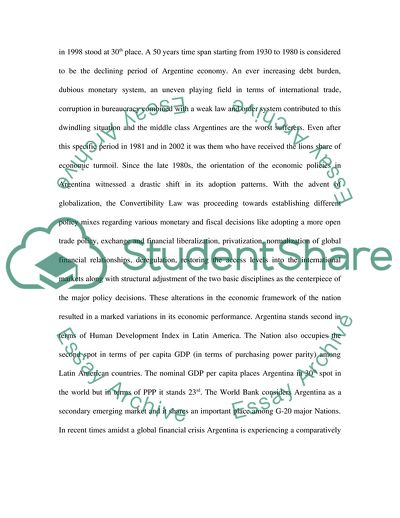Cite this document
(Argentina's Economic Development Case Study Example | Topics and Well Written Essays - 2500 words, n.d.)
Argentina's Economic Development Case Study Example | Topics and Well Written Essays - 2500 words. Retrieved from https://studentshare.org/macro-microeconomics/1722561-country-case-report-economics-of-argentina
Argentina's Economic Development Case Study Example | Topics and Well Written Essays - 2500 words. Retrieved from https://studentshare.org/macro-microeconomics/1722561-country-case-report-economics-of-argentina
(Argentina'S Economic Development Case Study Example | Topics and Well Written Essays - 2500 Words)
Argentina'S Economic Development Case Study Example | Topics and Well Written Essays - 2500 Words. https://studentshare.org/macro-microeconomics/1722561-country-case-report-economics-of-argentina.
Argentina'S Economic Development Case Study Example | Topics and Well Written Essays - 2500 Words. https://studentshare.org/macro-microeconomics/1722561-country-case-report-economics-of-argentina.
“Argentina'S Economic Development Case Study Example | Topics and Well Written Essays - 2500 Words”. https://studentshare.org/macro-microeconomics/1722561-country-case-report-economics-of-argentina.


